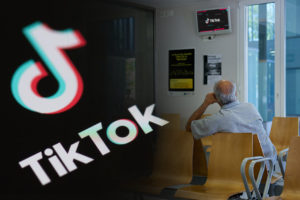“With the increasing recognition of brand storytelling in relation to business growth, many are jumping on board. Not all of them are getting it right though” – Business Communications expert Gabrielle Dolan
More and more companies are realizing that when it comes to business growth, brand storytelling can play a critical role. They recognize how well-constructed stories create an emotional connection that engages and connects with current and potential customers. What’s more, stories have great shareability that can often be the most effective way to communicate to a broader market.
With the increasing recognition around brand storytelling in relation to business growth, many companies are jumping on the bandwagon. This is resulting in mixed results and consequently, some common mistakes are being made.
The three most common mistakes I see businesses make when it comes to brand storytelling are described below.
Not understanding what brand storytelling is
Many people think brand storytelling is about a logo or a tagline. Maybe even a slick corporate video or a TV commercial. Some think it’s a timeline of your company or the purpose, vision and values stated on a page. It’s not.
Brand storytelling is a deliberate and sustainable approach to authentically communicate your brand, internally and externally. This is achieved by proactively finding multiple stories and sharing them in a variety of ways.
Thinking it is only one story
You cannot communicate your entire brand in one story. Many companies make the mistake that brand storytelling is all about sharing the story about why the company started. While this is an important story to share, it’s essential to consider a variety of stories. I encourage companies to look for five types of stories:
- Creation stories explain why a product was created or why the company was founded. Be careful not to confuse a timeline with a story when telling it.
- Culture stories showcase employees living the company values or sharing what those values mean to them personally.
- Community stories explain how the company or its employees are doing good things to benefit the community.
- Customer stories present the diversity of your customers or what your employees are doing for customers.
- Challenge stories reveal how the company has responded to specific challenges across the business spectrum.
Not defining the brand
Companies need to be clear on their brand and how they want to be described by employees and customers alike. If an organization does not have a clearly defined brand detailing things such as mission, vision, purpose and values, then it is very difficult to know what types of stories to share.
A fine example of brand storytelling
A great example of how brand storytelling helped with business growth comes from the Sydney-based whisky, gin and vodka distillery Archie Rose Distilling Co, founded in 2014. When it was forced to close its bar during COVID-19 lockdowns, it made the immediate decision to switch production from spirits to hand sanitiser to meet market demands. Within three days, the company had sourced bottles, reconfigured its production line, created and printed labels, and produced 7,500 bottles of hand sanitiser.
The positive impact this story had on their brand was amazing and it received local and worldwide attention. Victoria Tulloch, Archie Rose’s Head of Marketing, advised that within four months of the story spreading about its hand sanitiser, the company doubled its database, and its social media platform grew by 30 per cent. Tulloch believes that its brand awareness was accelerated by at least 12–18 months.
If this can be the impact of just one story, imagine the cumulative effect that many stories could have.
Implementing brand storytelling is not easy and it’s not quick. However, done right, it has the potential to make your employees and customers your greatest brand ambassadors. Stories can create immediate and long-lasting brand loyalty as well as connect and engage with a much wider audience. This is how brand storytelling can result in significant business growth.
Our work is always to Earn Trust, Build Reputation, Widen Influence to grow your brand and business.
For more info visit CEO Magazine






